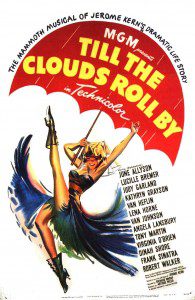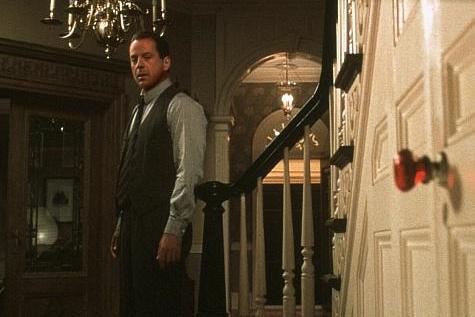I take exception to a line in an article by Stephen Carter titled Top Ten Writing Mistakes Editors See Every Day (an excellent post for aspiring novelists), where the author writes under the subheading of Delusions of Literature:
In David Mitchell’s Cloud Atlas
, the character of Timothy Cavendish at one point remarks, “As an experienced editor, I disapprove of flashbacks, foreshadowings, and tricksy devices; they belong in the 1980s with M.A.s in postmodernism and chaos theory.” This is very good advice…
Good advice? I thought, wait a minute! Of course, stories can be told without flashbacks, but foreshadowing is essential for any good yarn.
Let’s explore some of the different types of foreshadowing with examples of how authors have utilized them.
Foreshadowing in the Opening Paragraph
Suzanne Collins opens The Hunger Games with this intriguing paragraph.
When I wake up, the other side of the bed is cold. My fingers stretch out, seeking Prim’s warmth but finding only the rough canvas cover of the mattress. She must have had bad dreams and climbed in with our mother. Of course, she did. This is the day of the reaping.
At this point, we have no idea of what the reaping entails, but it can’t be good.
Foreshadowing at the End of a Chapter
Recently, I picked up Station Eleven by Emily St. John Mandel. The second chapter closes with a short paragraph that foreshadows so conspicuously it pokes the reader in the eye.
Of all of them there at the bar that night, the bartender was the one who survived the longest. He died three weeks later on the road out of the city.
I continued reading but later returned to study the three-page chapter. Why had the author taken the time to introduce characters only to kill them all before the story unfolded? I discovered the conversation between the bartender and customers served as a vehicle to provide backstory on the longest-surviving person. Also, the chapter introduces a little girl in a nearby room whom we later learn is a main character in the novel. Well played, Ms. Mandel.
Subtle Foreshadowing in Character Introductions
I have always marveled at Charles Dicken’s ability to portray characters so vividly they endured in my imagination years after I had turned the final pages. For example, in the opening chapter of David Copperfield, Dickens introduces Copperfield’s mother on the day of his birth using more subtle foreshadowing.
My mother was sitting by the fire, but poorly in health, and very low in spirits, looking at it through her tears, and desponding heavily about herself and the fatherless little stranger, who was already welcomed by some grosses of prophetic pins, in a drawer upstairs, to a world not at all excited on the subject of his arrival; my mother, I say, was sitting by the fire, that bright, windy March afternoon, very timid and sad, and very doubtful of ever coming alive out of the trial that was before her, when, lifting her eyes as she dried them, to the window opposite, she saw a strange lady coming up the garden.
With hints like “poorly in health,” “low in spirits,” “desponding heavily about herself,” and “doubtful of ever coming alive out of the trial that was before her,” we aren’t surprised when David is orphaned by age nine.
Foreshadowing Buried Amid Other Details
In his science fiction classic, Rendezvous with Rama, Arthur C. Clark details the discovery of an asteroid as it enters the solar system on a course that will bring it close to Earth before it slingshots around the sun and off into the cosmos. On page five, he tells us:
Rama showed no such changes. Either it was not spinning at all or it was perfectly symmetrical. Both explanations seemed unlikely.
This morsel of information, buried in a multiple-page description of the physical characteristics of the asteroid, could be easily overlooked. But it’s a clear indication that this “asteroid” isn’t an asteroid at all. Later we learn it’s a twenty-five-mile-wide object constructed by an alien civilization.
Foreshadowing Using Dialogue
Robert Ludlum uses dialogue together with a bit of action to foreshadow in The Bourne Identity. For example, in Chapter Two, a doctor challenges his amnesic patient.
“Break it down. Now.”
The man looked at the gun. And then, in silence, his hands and fingers moved expertly over the weapon. In less than thirty seconds it was completely dismantled. He looked up at the doctor.
“See what I mean?” said Washburn. “Among your skills is an extraordinary knowledge of firearms.”
“Army?” asked the man, his voice intense, once more apprehensive.
“Extremely unlikely,” replied the doctor. “When you first came out of your coma, I mentioned your dental work. I assure you it’s not military. And of course, the surgery, I’d say, would totally rule out any military association.”
Our curiosity compels us to continue turning pages as the nameless man unravels the secrets of his past and his true identity.
Further Reading
Of course, these are just a few of the many ways that writers can implement foreshadowing.
In his book, Story Engineering (this tome, more than any other, has helped me improve my storytelling skills), Larry Brooks devotes an entire chapter to the artful use of foreboding in novels and screenplays. He opens the chapter with these words:
Foreshadowing is one of those essential little storytelling kinks — I like to think of it as an opportunity — that can be at once easier than it looks and yet challenging to pull off. If that sounds contradictory and confusing, welcome to the balancing act that is writing fiction.
Larry explains when and what to foreshadow, along with examples of different techniques.
William Noble also sets aside several pages in his book Conflict, Action & Suspense (Elements of Fiction Writing) to show how writers can use foreshadowing to develop suspense and extend action in stories.
Summary
I hope my exploration of foreshadowing benefits you. If you have more examples or specific techniques you use, please share them in the comment section below.
Several books are mentioned in this article. Additional information is provided on these below.
(Full disclosure: We get a commission if you click the links and make a purchase. Thank you!)
Comments
Related Posts

Till, ‘Til, Til or Until? Which is right?
I was sure that till meant breaking up dirt; that until meant “up to the time of”; and, when people shortened until in speech, you wrote it as ’til – or maybe just til. But, after a little research, I learned I had it wrong.

Book Trailers: Are They Effective?
Do book trailers actually affect book buying decisions? Help me decide by completing my poll and adding your comments.

How to Create Suspense: Leave ‘Em Hanging
In order to compose a page-turner, you’ve got to leave the reader hanging. Here are some tips for doing it well.

Condense a Novel into One-Page Synopsis
Sooner or later you will need to condense your entire novel down to a one-page synopsis. For novelists, it’s a herculean task. Here’s how I did it.










0 Comments